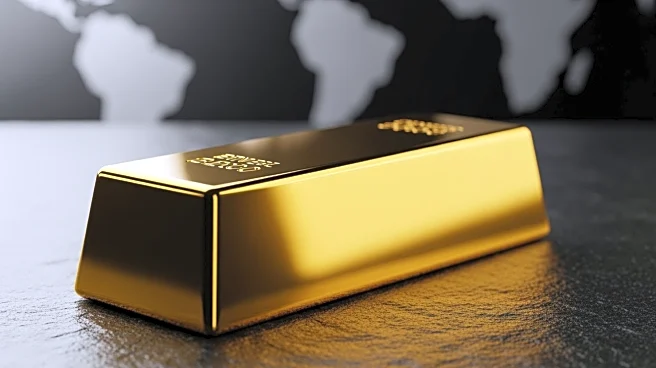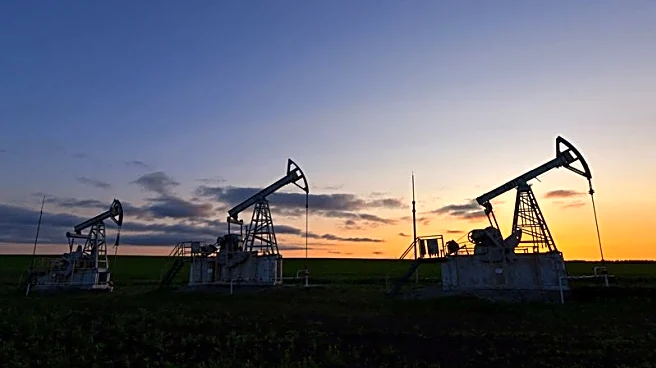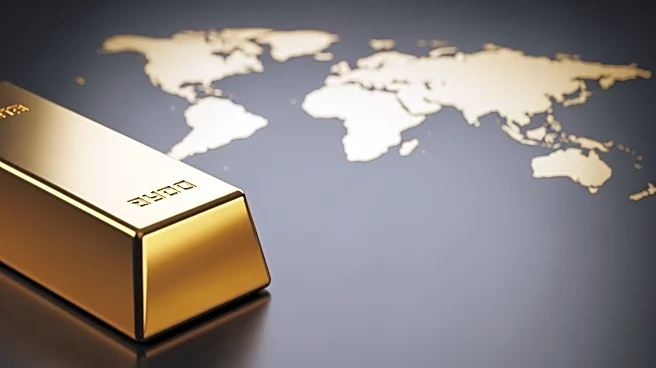What's Happening?
Goldman Sachs has reported that central banks are likely to continue purchasing significant amounts of gold in November, as part of a multi-year trend aimed at diversifying reserves to hedge against geopolitical
and financial risks. The firm estimated that central banks bought 64 tonnes of gold in September, a substantial increase from 21 tonnes in August. Goldman Sachs has also projected that gold prices will reach $4,900 by the end of 2026, with further gains anticipated if private investors continue to diversify their portfolios. Currently, spot gold is priced at approximately $4,068 per ounce, having increased by 55% this year due to economic and geopolitical concerns, rising exchange-traded fund inflows, and expectations of further U.S. interest rate cuts.
Why It's Important?
The continued purchase of gold by central banks highlights a strategic move to safeguard against global uncertainties and financial instability. This trend could have significant implications for the global economy, as increased demand for gold may drive prices higher, affecting industries reliant on gold as a commodity. Investors and financial markets may experience shifts as gold becomes a more attractive asset for diversification. Additionally, the forecasted rise in gold prices could influence monetary policies and investment strategies worldwide, impacting economic stakeholders who rely on stable currency reserves.
What's Next?
As central banks persist in their gold buying spree, financial markets may see increased volatility, with potential adjustments in investment strategies and monetary policies. Stakeholders, including investors and policymakers, will likely monitor these developments closely, assessing the impact on global economic stability and currency valuations. The anticipated rise in gold prices could prompt further diversification efforts by private investors, potentially leading to shifts in asset allocation and investment priorities.












